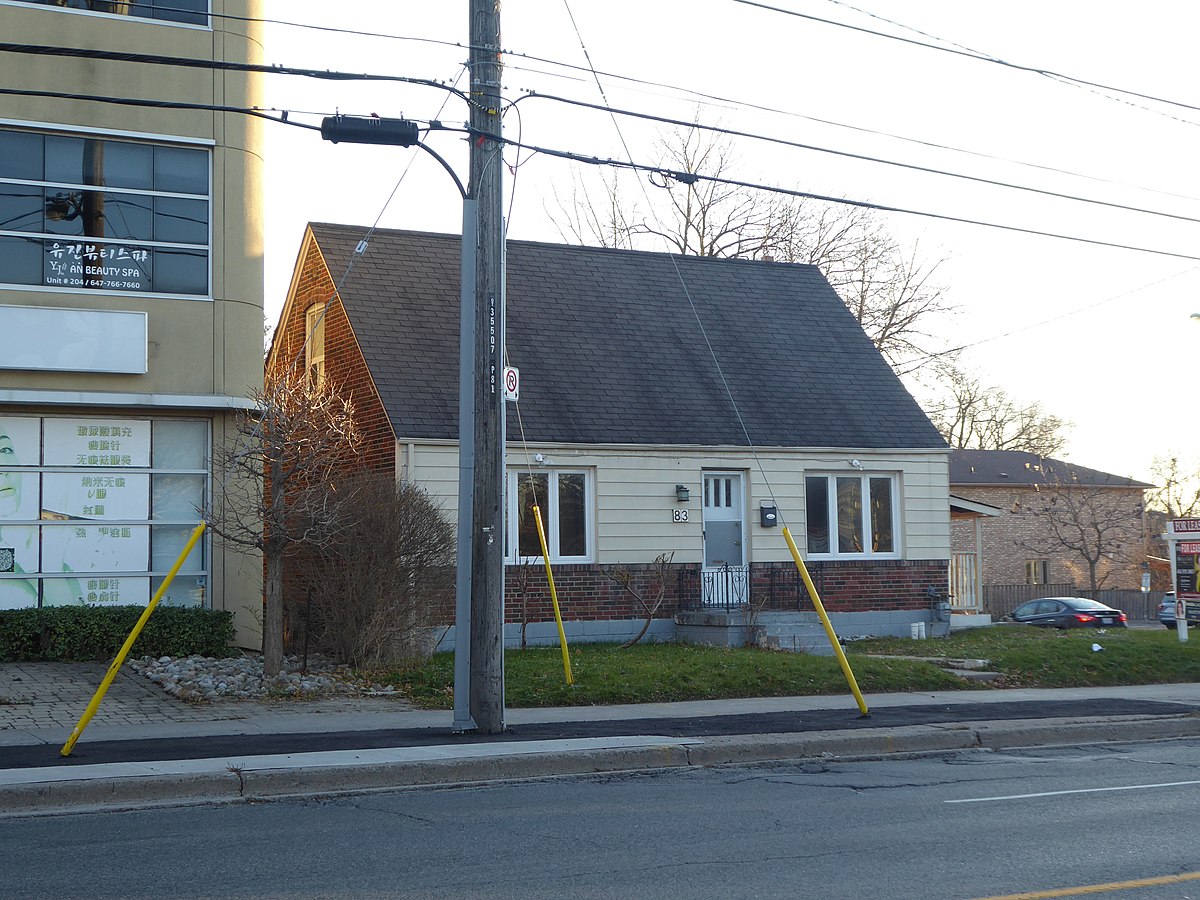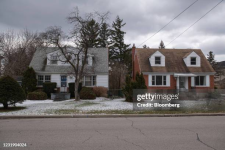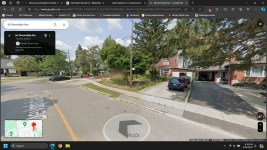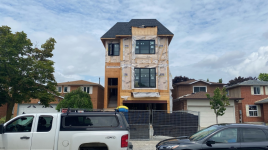spending your money twice then. 200 home subdivisions with all the bells and whistles including landscaping and sidewalks go up in every major city in less time than they are talking for the singles building. Their announcement is a joke, a very sick joke for those trying to move into the Victoria areaMy understanding is that pre-fabs/ATCO style might be required in some places to bridge the gap until new, permanent quarters can be built.
You are using an out of date browser. It may not display this or other websites correctly.
You should upgrade or use an alternative browser.
You should upgrade or use an alternative browser.
New accommodations facility at CFB Esquimalt and plan to build more homes on military bases
- Thread starter OceanBonfire
- Start date
Bluebulldog
Full Member
- Reaction score
- 152
- Points
- 680
Swing space is common for most major accommodation projects where existing is being renovated / or demo'd. Rental space from ATCO or WILSCOT would have been factored into the project budget.spending your money twice then. 200 home subdivisions with all the bells and whistles including landscaping and sidewalks go up in every major city in less time than they are talking for the singles building. Their announcement is a joke, a very sick joke for those trying to move into the Victoria area
Building a stick frame subdivision, in comparison to a Federally Owned asset isn't really an equivalency. But I get where you're coming from.
- Reaction score
- 3,302
- Points
- 1,040
For larger cities density is the future. Building a bunch of small single dwelling homes still doesn’t change the fact that you have 4 families living in the same area you could have 80 (or more). It also means longer commutes, as those houses keep getting built farther and farther back until you eventually run out of space to do so.It is, its small, very small.
But its probably what we should be building right now, if we want to keep going with single family homes. I know the HRM City Council seems to believe that the future is in density, apartments and condos.
It doesn’t mean the end of single family homes, it’s just acknowledging that larger cities have limited footprints but high populations and as such it makes sense to build densely in those areas.
Most the issues we have with housing has been we never built high density infrastructure and instead kept pushing single dwelling homes long after it became obvious it wasn’t a long term solution for those cities.
The CAF in general should be building a ton of shacks, starting with apartments then some single dwelling homes, enough to house the CAF plus some expansion. If you choose to live off base no PLD or equivalent, you pay the same as everyone else. Make the on base housing a low fixed amount across the country, ‘local housing prices’ shouldn’t matter, the military doesn’t do a local job.
CountDC
Army.ca Veteran
- Reaction score
- 698
- Points
- 1,090
Surely they can find the blueprints for these puppies? I think half the houses in Winnipeg’s post-war neighbourhoods use this design.

Strawberry box house - Wikipedia
en.m.wikipedia.org
The Americans can't find the technology used to land on the moon, do you really think Canada can find these blueprints?
Toronto is supposedly on the list for some housing at local market value. This of course raised the question of "do you really think that is going to help Cpl Bloggins that is struggling with the local market value?" Moving from one place they can't afford to another they can't afford doesn't solve anything. One problem with TB and the Government involved in every decision is when locals outside the military cry foul they are too quick to jump for the vote. Don't know how much truth there is to it but one reason I was given that factored into the change - local landlords complained that military members were opting to live in quarters rather than rent from them because it was cheaper.
Quirky
Army.ca Veteran
- Reaction score
- 4,624
- Points
- 1,260
Don't know how much truth there is to it but one reason I was given that factored into the change - local landlords complained that military members were opting to live in quarters rather than rent from them because it was cheaper.
If the CAF had the capability to build their own PMQs there would probably less backlash on these types of things.
I would tell the landlords to eat sh*t, have them lower their prices to match local PMQ rates for CAF members or face a loss of income. Our salaries are fixed regardless of our posting, housing costs should be too. We don’t have enough people with a backbone to care about problems like this.
More than PMQs, I just wish the CAF built a lot more SQs. Even in non-Reg F areas. Simply providing that, means one less participant in the local housing market. Cheap SQ would be a great incentive to join the reserves. Especially given how difficult it is for a lot of students and young people to get decent and cheap housing and given how many of our reservists are students and young people. We can't seem to have government think of housing beyond silos though.
- Reaction score
- 5,991
- Points
- 1,160
As did I (not far from where the linked image is); although I think it was considered a Victory House built in 1950. It had upstairs dormer windows.Post war story and a half.
I live in one. Great little house.

Perhaps they could dig back into the Eaton's archives and find the plans for a catalogue house.

My understanding is that pre-fabs/ATCO style might be required in some places to bridge the gap until new, permanent quarters can be built.
I'm sure the Southern family keeps friends with both main parties.
- Reaction score
- 3,302
- Points
- 1,040
Part of the housing crisis is we can’t build homes like that anymore, they don’t meet modern code. If we were allowed to build older designs/standards we could build cheaper and quicker. Simple example being outlets, a new build needs a outlet every 6-8’, older homes not so much. But each outlet means more wiring, more time for the electrician, and more time drywalling and such as you have to go around the outlets.
Not to mention insulation, etc. costs add up very quickly
Not to mention insulation, etc. costs add up very quickly
- Reaction score
- 3,754
- Points
- 1,190
Yea when I moved into Strawberry Box house I was quite annoyed at having only one outlet in each of the two bedrooms.Part of the housing crisis is we can’t build homes like that anymore, they don’t meet modern code. If we were allowed to build older designs/standards we could build cheaper and quicker. Simple example being outlets, a new build needs a outlet every 6-8’, older homes not so much. But each outlet means more wiring, more time for the electrician, and more time drywalling and such as you have to go around the outlets.
Not to mention insulation, etc. costs add up very quickly
When I finished the basement in my next house, there was at least 2 outlets per wall, sometimes 3, and sometimes those outlets were double outlets, plus low-voltage outlets, plus ethernet outlets. Mind you I did all that myself so there wasn't any extra labour cost... Except for my wife nagging "uuughh when are you going to be finiiiiished!".
- Reaction score
- 347
- Points
- 930
While I like your idea, I see some pitfalls:More than PMQs, I just wish the CAF built a lot more SQs. Even in non-Reg F areas. Simply providing that, means one less participant in the local housing market. Cheap SQ would be a great incentive to join the reserves. Especially given how difficult it is for a lot of students and young people to get decent and cheap housing and given how many of our reservists are students and young people. We can't seem to have government think of housing beyond silos though.
1. What is the criteria for being allowed to rent one? ie. So many days attendance a month? Valid Force test? Green on ARV? etc...? You can't just allow reservists to rent them as you'll get people joining to get a place and never showing up (or just showing up enough to not go NES), but bringing no added value to the force.
2. Who is the landlord? CFHS can't manage/repair/upgrade the homes they have now. Giving them even more homes (away from Bases as you suggest) will only increase the speed at which they turn into crap if no one is looking after them.
3. You mention cheap SQs. That's partly why we're in the mess we are with housing. The local market will cry foul, the politicians will pander to them to get votes, and the price will jump to "fair market value", which in places like BC and Ontario, will mean rent is still unaffordable.
4. Who polices these SQs? Junior soldiers being how they are, I suspect there will be times when policing is required. If they are considered SQs, I imagine (happy to be educated on this point) that the MPs will have to/want to be the ones investigating the low end offences (trashing the place, quarrels, etc...)
5. Along with point 1 above, who is pri for getting these? There will likely never be enough to satisfy demand, so is it based on need (and how do you calculate that), Rank, time in (or lack of such), etc... And is it once your in, your in for life (or until you release at least)?
Anyhow you get my point. Until we can sort out/provide enough housing on major bases, I can't see this seeing the light of day. I wish I were wrong as it could help.
- Reaction score
- 5,991
- Points
- 1,160
I'm not sure modern Code compliance would comparatively add a whole lot to the cost. I tried to find a representative $/sf value from back then but could not. Cost of land and infrastructure costs would probably be a significant factor. Our 'victory house' in Toronto, built in 1950, was on septic and the street had no storm drains or curbs; basically a paved street with water, phone and hydro.Part of the housing crisis is we can’t build homes like that anymore, they don’t meet modern code. If we were allowed to build older designs/standards we could build cheaper and quicker. Simple example being outlets, a new build needs a outlet every 6-8’, older homes not so much. But each outlet means more wiring, more time for the electrician, and more time drywalling and such as you have to go around the outlets.
Not to mention insulation, etc. costs add up very quickly
Also, the finished interior was much more basic that you typically find today. Kitchen cabinets were painted plywood and the counter was flat formica with an aluminum edge. These days, features like central a/c stone counters seem to be de rigeur. I don't know if the market drives the developers or the developers drive the market.
With land costs today in most urban areas, trying to market a very basic detached house would probably be a tough sell regardless of what the politicians and economists say.
- Reaction score
- 37,954
- Points
- 1,210
Most CAF bases require a lot of investment in unsexy things like water, sewer and electrical. It's not just a case of "there's land, let's build".
- Reaction score
- 16,484
- Points
- 1,160
Costs here in North Van, just to get permits is around $250,000. How the F*ck they justify that, i don't know.I'm not sure modern Code compliance would comparatively add a whole lot to the cost. I tried to find a representative $/sf value from back then but could not. Cost of land and infrastructure costs would probably be a significant factor. Our 'victory house' in Toronto, built in 1950, was on septic and the street had no storm drains or curbs; basically a paved street with water, phone and hydro.
Also, the finished interior was much more basic that you typically find today. Kitchen cabinets were painted plywood and the counter was flat formica with an aluminum edge. These days, features like central a/c stone counters seem to be de rigeur. I don't know if the market drives the developers or the developers drive the market.
With land costs today in most urban areas, trying to market a very basic detached house would probably be a tough sell regardless of what the politicians and economists say.
- Reaction score
- 5,991
- Points
- 1,160
I decided to do a trip down memory lane. This is a streetview screen grab of the house I grew up in. The trees are a whole lot bigger than they were fifty years ago when I left so hard to get a square shot. Fun fact that the upstairs dormers were exactly wide enough for the desk where I (allegedly) did my homework. My dad was a federal government accountant worked projects at A. V. Roe during the heady days of the Arrow and Avrocar and into the SPAR Aerospace era. The desk I used had an AVRO plate on it and assume he got it as surplus when they were downsizing. Solid Oak and, as an old partner would say, 'heavier than a dead preacher'.
The whole street was cookie-cutter houses like ours, interspersed about every ten houses or so by a bungalow (you can see one just to the right).

The whole street was cookie-cutter houses like ours, interspersed about every ten houses or so by a bungalow (you can see one just to the right).

- Reaction score
- 3,302
- Points
- 1,040
It does add a bit, and every bit counts when your housing costs 400$/sqft.I'm not sure modern Code compliance would comparatively add a whole lot to the cost. I tried to find a representative $/sf value from back then but could not. Cost of land and infrastructure costs would probably be a significant factor. Our 'victory house' in Toronto, built in 1950, was on septic and the street had no storm drains or curbs; basically a paved street with water, phone and hydro.
Also, the finished interior was much more basic that you typically find today. Kitchen cabinets were painted plywood and the counter was flat formica with an aluminum edge. These days, features like central a/c stone counters seem to be de rigeur. I don't know if the market drives the developers or the developers drive the market.
With land costs today in most urban areas, trying to market a very basic detached house would probably be a tough sell regardless of what the politicians and economists say.
My buddy just had his basement completely mudded and electrical done. Cost 20k between the two of them and he even put up the drywall sheets himself. Crazy how fast the expenses add up.
There is a market for basic detached homes my house for example was one of those. Lots has been renoed but lots is still original (cupboards, which even if they were basic wood are better quality than most modern particle board with veneer crap people are selling). That being said that market isn’t being developed as why would a developer build a less profitable build when the demand for higher end houses (and more profitable) aren’t met?
Another thing which hurts supply is when we approve permits to rip down perfectly functional but old houses just to build a mcmansion on the same property with the same number of inhabitants as before.
- Reaction score
- 37,954
- Points
- 1,210
Another thing which hurts supply is when we approve permits to rip down perfectly functional but old houses just to build a mcmansion on the same property with the same number of inhabitants as before.
In my relatively central Ottawa neighbourhood, someone with "Fuck You, early guy at Shopify fully vested" money bought three homes (for north of $2.5M), tore them down, and built a huge monstrosity with a lawn beside it. All 100% per planning. If someone had wanted to build a same-sized building with four units, it would have been a nightmare of planning meetings and additional costs.
- Reaction score
- 5,991
- Points
- 1,160
Lots of horrid examples in and around Toronto of that before bylaws regarding factors like lot coverage, setbacks, height, etc. were tightened up.Another thing which hurts supply is when we approve permits to rip down perfectly functional but old houses just to build a mcmansion on the same property with the same number of inhabitants as before.
daftandbarmy
Army.ca Fossil
- Reaction score
- 43,105
- Points
- 1,160
It's not a housing crisis as much as a data crisis. Without good data there's no way to tell if you're doing the right thing, of course. An Ontario example, likely replicated nationally : ‘We don’t track data as well as we should,’ Ontario housing minister says | Globalnews.caLots of horrid examples in and around Toronto of that before bylaws regarding factors like lot coverage, setbacks, height, etc. were tightened up.
- Reaction score
- 5,991
- Points
- 1,160
When the feds are beating you up for 'not doing enough', it's a pretty easy mea culpa to say 'ya, we are, but our data sucks - we bad'. Data collection is self-serving. They have a great website covering where to buy booze in the province, but not one to track hospital ER and other department closures.It's not a housing crisis as much as a data crisis. Without good data there's no way to tell if you're doing the right thing, of course. An Ontario example, likely replicated nationally : ‘We don’t track data as well as we should,’ Ontario housing minister says | Globalnews.ca
I was more thinking of poor controls in the early days of in-filling older neighbourhoods. People were buying up older wartime or post-war houses, tearing them down and putting up a 3-floor monster that covered 90% of the lot and overshadowing the neighbourhood. It still only housed one family.

Similar threads
- Replies
- 34
- Views
- 22K
- Replies
- 165
- Views
- 86K
- Replies
- 2
- Views
- 11K




